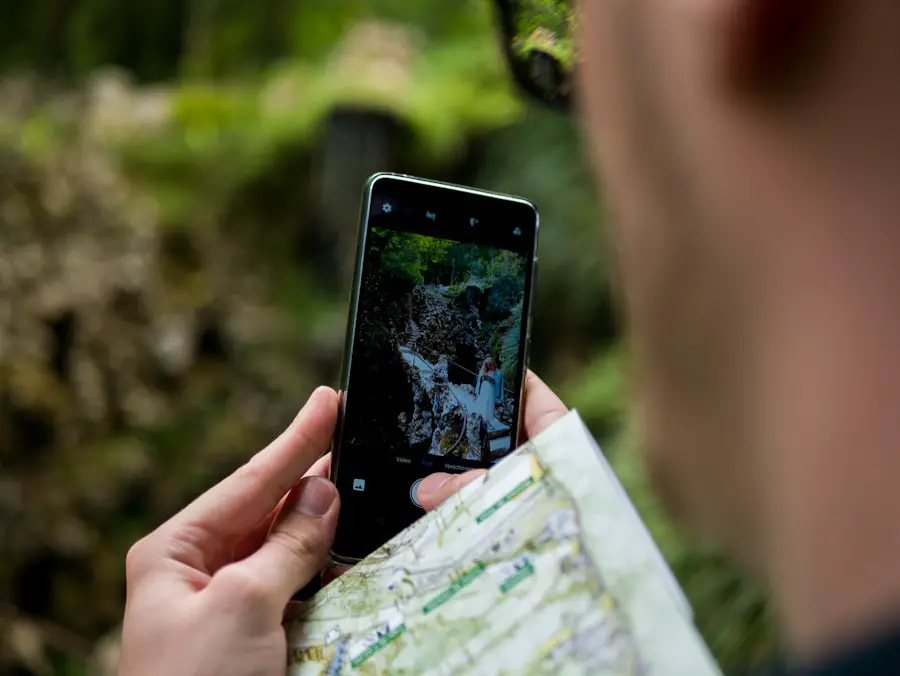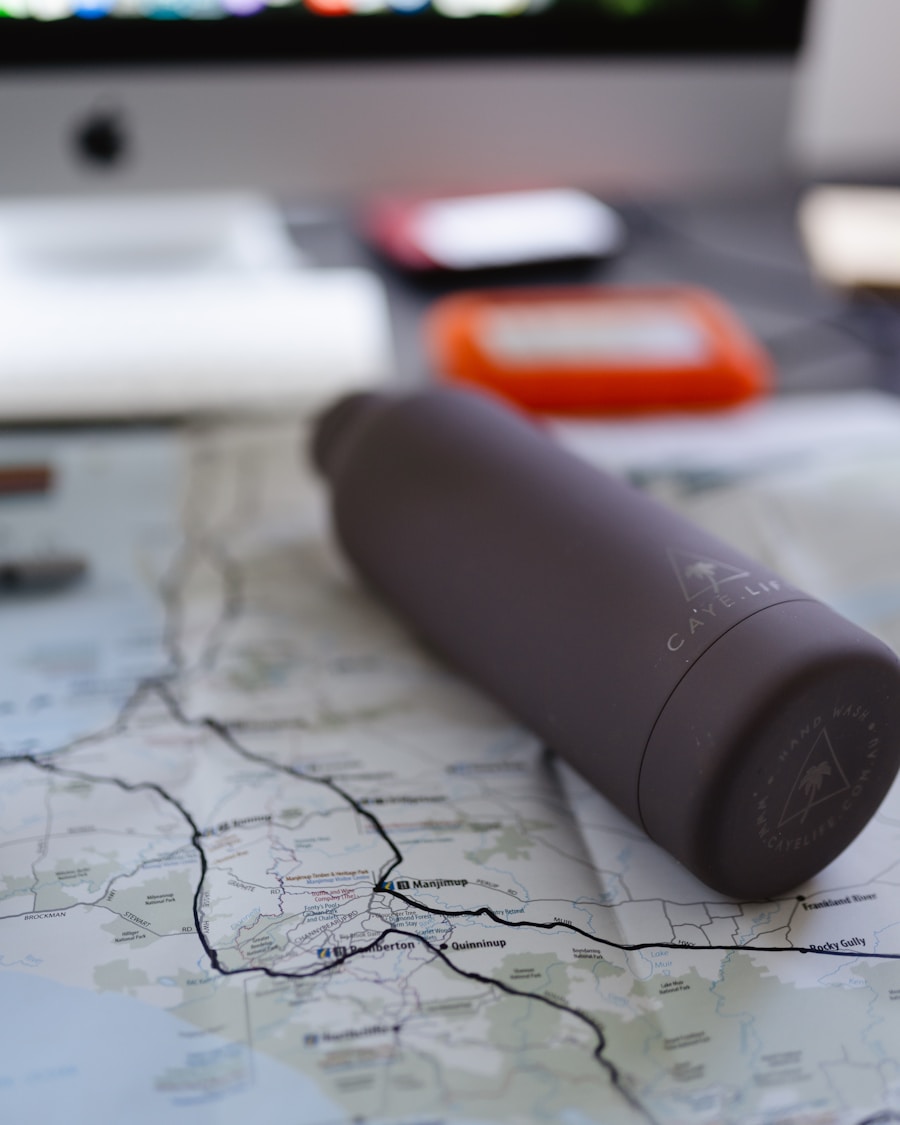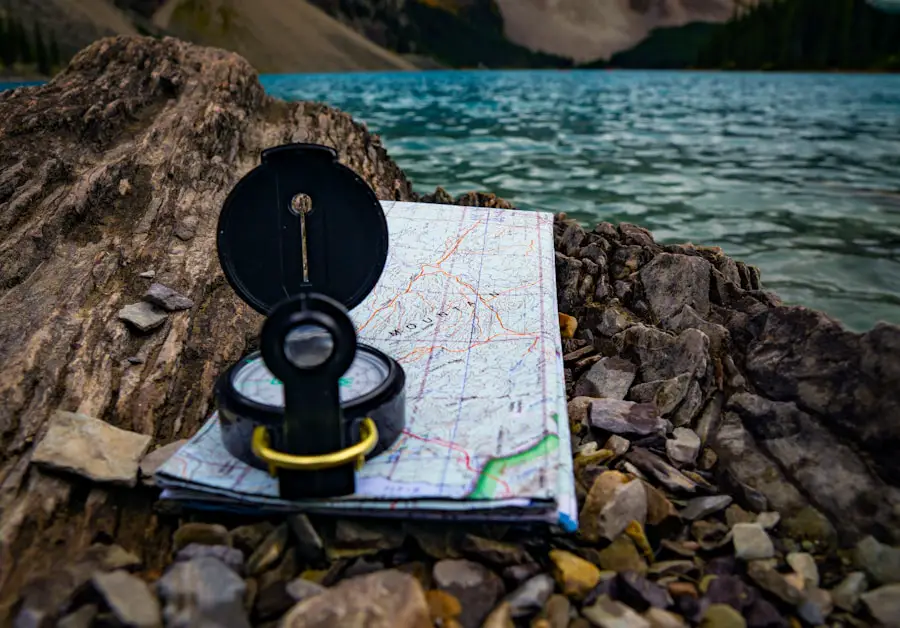Global Positioning System (GPS) technology has revolutionized the way we navigate and interact with our environment. At its core, GPS is a satellite-based navigation system that allows users to determine their precise location anywhere on Earth. The system consists of a constellation of at least 24 satellites orbiting the planet, ground control stations, and GPS receivers.
The satellites continuously transmit signals that contain information about their location and the exact time the signals were sent. When a GPS receiver picks up signals from at least four satellites, it can triangulate its position using a method called trilateration. This process involves calculating the distance from each satellite based on the time it takes for the signals to reach the receiver.
The accuracy of GPS technology is remarkable, often pinpointing locations within a few meters. However, several factors can influence this precision, including atmospheric conditions, signal obstructions from buildings or trees, and the quality of the GPS receiver itself. Modern GPS devices often incorporate additional technologies, such as Assisted GPS (A-GPS), which uses cellular networks to enhance location accuracy, especially in urban environments where satellite signals may be weak.
Understanding these fundamentals is crucial for anyone looking to utilize GPS technology effectively, particularly in outdoor activities like hiking, where reliable navigation is essential.
Key Takeaways
- GPS technology uses a network of satellites to determine the exact location of a GPS device.
- When choosing a GPS device for hiking, consider factors such as battery life, durability, and ease of use.
- Learning how to read and interpret GPS maps is essential for understanding terrain, elevation, and potential obstacles.
- Utilize GPS for navigation and route planning by inputting waypoints, tracking your progress, and creating routes.
- Understand the accuracy and limitations of GPS, including factors such as signal interference and environmental conditions.
Choosing the Right GPS Device for Hiking
Selecting the appropriate GPS device for hiking involves considering various factors that align with your specific needs and hiking style. One of the primary considerations is the type of GPS device: handheld units, smartphone apps, or dedicated outdoor GPS devices. Handheld GPS units are designed specifically for outdoor use, often featuring rugged designs that can withstand harsh weather conditions and rough handling.
They typically offer longer battery life compared to smartphones and come equipped with features tailored for hikers, such as topographic maps and waypoint marking capabilities. Smartphone apps have gained popularity due to their convenience and accessibility. Many apps provide detailed maps and navigation features, often at a lower cost than dedicated devices.
However, they rely on battery power and may not perform well in remote areas without cellular service. When choosing a device, consider factors such as screen size, ease of use, battery life, and additional features like altimeters or compasses. For instance, if you frequently hike in mountainous terrain, a device with an altimeter can provide valuable elevation data that enhances your navigation experience.
Learning How to Read and Interpret GPS Maps

Understanding how to read and interpret GPS maps is essential for effective navigation in the wilderness. GPS maps differ from traditional paper maps in that they are often interactive and can display real-time data about your location. Familiarizing yourself with the symbols and features on these maps is crucial.
Most GPS maps will show trails, roads, water bodies, elevation contours, and other significant landmarks. Learning to recognize these symbols can help you make informed decisions about your route. In addition to recognizing symbols, understanding map scales and coordinates is vital.
GPS maps typically use a coordinate system based on latitude and longitude to pinpoint locations. Knowing how to convert between different coordinate formats—such as decimal degrees and degrees-minutes-seconds—can be beneficial when communicating your location with others or when using different mapping tools. Furthermore, many GPS devices allow users to overlay various types of data on their maps, such as weather information or points of interest (POIs), which can enhance your hiking experience by providing context about your surroundings.
Utilizing GPS for Navigation and Route Planning
| Metrics | Value |
|---|---|
| Accuracy of GPS navigation | Within 5 meters |
| Time saved using GPS route planning | Up to 20% |
| Reduction in fuel consumption | Up to 15% |
| Number of waypoints supported | Up to 150 |
GPS technology offers powerful tools for navigation and route planning that can significantly enhance your hiking experience. Before embarking on a hike, it’s advisable to plan your route using a combination of online mapping tools and your GPS device. Many outdoor enthusiasts utilize platforms like AllTrails or Gaia GPS to research trails, read reviews from other hikers, and download maps for offline use.
These platforms often provide detailed information about trail conditions, difficulty levels, and estimated hiking times. Once you have selected a route, you can upload it to your GPS device or smartphone app. This allows you to follow the planned path while receiving real-time updates about your location.
During your hike, you can use the device to track your progress, monitor your speed, and estimate your arrival time at various waypoints along the trail. Additionally, many devices allow you to create custom routes by marking waypoints or points of interest that you want to visit along the way. This level of planning not only enhances safety but also enriches the overall hiking experience by allowing you to explore new areas with confidence.
Understanding GPS Accuracy and Limitations
While GPS technology is incredibly useful for navigation, it is essential to understand its limitations and factors that can affect accuracy. One significant factor is signal obstruction; tall buildings, dense forests, or mountainous terrain can block satellite signals, leading to inaccuracies in location data. This phenomenon is known as multipath error, where signals bounce off surfaces before reaching the receiver, causing confusion in determining the correct position.
Another limitation is related to atmospheric conditions. The ionosphere and troposphere can distort signals as they travel through the atmosphere, leading to potential errors in positioning. Additionally, while consumer-grade GPS devices typically offer accuracy within 5-10 meters under ideal conditions, this accuracy can diminish in challenging environments.
To mitigate these issues, experienced hikers often carry backup navigation tools such as traditional maps and compasses. Understanding these limitations allows hikers to make informed decisions about when to rely on GPS technology and when to revert to traditional navigation methods.
Mastering GPS Waypoints and Marking Trails

Waypoints are critical components of effective navigation using GPS technology. A waypoint is a specific geographic location defined by coordinates that you can save on your device for future reference. Mastering the use of waypoints allows hikers to mark significant locations along their route—such as trailheads, campsites, water sources, or scenic viewpoints—making it easier to navigate back to these points later.
To mark a waypoint on most GPS devices or apps, you typically need to be at the desired location and then select the option to save or create a waypoint. It’s helpful to give each waypoint a descriptive name or label so you can easily identify it later. For example, if you find a great spot for lunch with a stunning view, marking it as “Lunch Spot” will help you remember it for future hikes.
Additionally, many devices allow you to categorize waypoints or add notes about them, which can be beneficial for planning future trips or sharing information with fellow hikers.
Using GPS for Geocaching and Outdoor Activities
Geocaching has become an increasingly popular outdoor activity that combines technology with adventure. It involves using GPS coordinates to find hidden containers—known as geocaches—scattered throughout various locations worldwide. Each geocache typically contains a logbook for finders to sign and sometimes small trinkets for trading.
To participate in geocaching, enthusiasts often use dedicated apps or websites that provide coordinates and clues for locating caches. Using GPS for geocaching not only adds an element of excitement but also encourages exploration of new areas that you might not have visited otherwise. Many geocachers enjoy the challenge of finding caches in remote or challenging terrains, which can lead to memorable experiences in nature.
Additionally, geocaching fosters a sense of community among outdoor enthusiasts who share tips and experiences through online forums or local events.
Tips for Maintaining and Troubleshooting GPS Devices on the Trail
Proper maintenance and troubleshooting of your GPS device are essential for ensuring reliable performance during hikes. One of the most important tips is to keep your device updated with the latest software and map data. Manufacturers frequently release updates that improve functionality and accuracy; therefore, regularly checking for updates before heading out on a hike is advisable.
Battery management is another critical aspect of maintaining your GPS device on the trail. Always start with a fully charged battery and consider carrying spare batteries or a portable charger if your device allows it. In addition to battery life, familiarize yourself with your device’s settings before hitting the trail; adjusting settings such as screen brightness or disabling unnecessary features can help conserve battery power during long hikes.
If you encounter issues while using your GPS device on the trail—such as inaccurate positioning or failure to acquire satellite signals—try troubleshooting steps like resetting the device or moving to an open area with fewer obstructions. Understanding how to navigate these challenges will enhance your confidence in using GPS technology effectively while enjoying outdoor adventures. In summary, mastering GPS technology involves understanding its fundamentals, selecting the right device for your needs, learning how to interpret maps accurately, utilizing it for navigation and route planning effectively, recognizing its limitations, mastering waypoints for better trail marking, engaging in activities like geocaching, and maintaining your device properly during outdoor excursions.
By integrating these skills into your hiking routine, you can enhance both safety and enjoyment while exploring nature’s wonders.
If you’re planning a hiking trip and want to make sure you have all the necessary gear, you may want to consider investing in a rechargeable hand warmer for travel. This handy device can keep your hands warm and comfortable during chilly hikes, ensuring you stay comfortable throughout your journey. Pairing this with the best travel pants with hidden pockets can help you stay organized and prepared for any situation while on the trail. Additionally, having a reliable GPS device is crucial for navigation, so be sure to check out our article on 5 must-have hardside carry-on luggage with spinner wheels for spring 2025 to find the perfect option for your hiking adventures. Check out the article here.
FAQs
What is a GPS device?
A GPS (Global Positioning System) device is a navigation tool that uses satellite signals to determine the user’s exact location and provide directions to a specific destination.
How does a GPS device work for hiking?
A GPS device for hiking works by receiving signals from satellites to determine the user’s current location. It can then display maps, track routes, and provide information on distance, elevation, and waypoints to help hikers navigate their surroundings.
What are the benefits of using a GPS device for hiking?
Using a GPS device for hiking provides several benefits, including accurate navigation, tracking of routes, the ability to mark waypoints, and access to detailed maps and terrain information.
How do I use a GPS device for hiking?
To use a GPS device for hiking, start by familiarizing yourself with the device’s features and functions. Then, input your desired destination or route, and follow the on-screen instructions to navigate your hike. It’s important to regularly update the device’s software and maps for optimal performance.
What are some popular GPS devices for hiking?
Popular GPS devices for hiking include Garmin GPSMAP series, Magellan eXplorist series, and the Suunto Traverse series. These devices offer various features such as topographic maps, waypoint marking, and long battery life for outdoor use.
